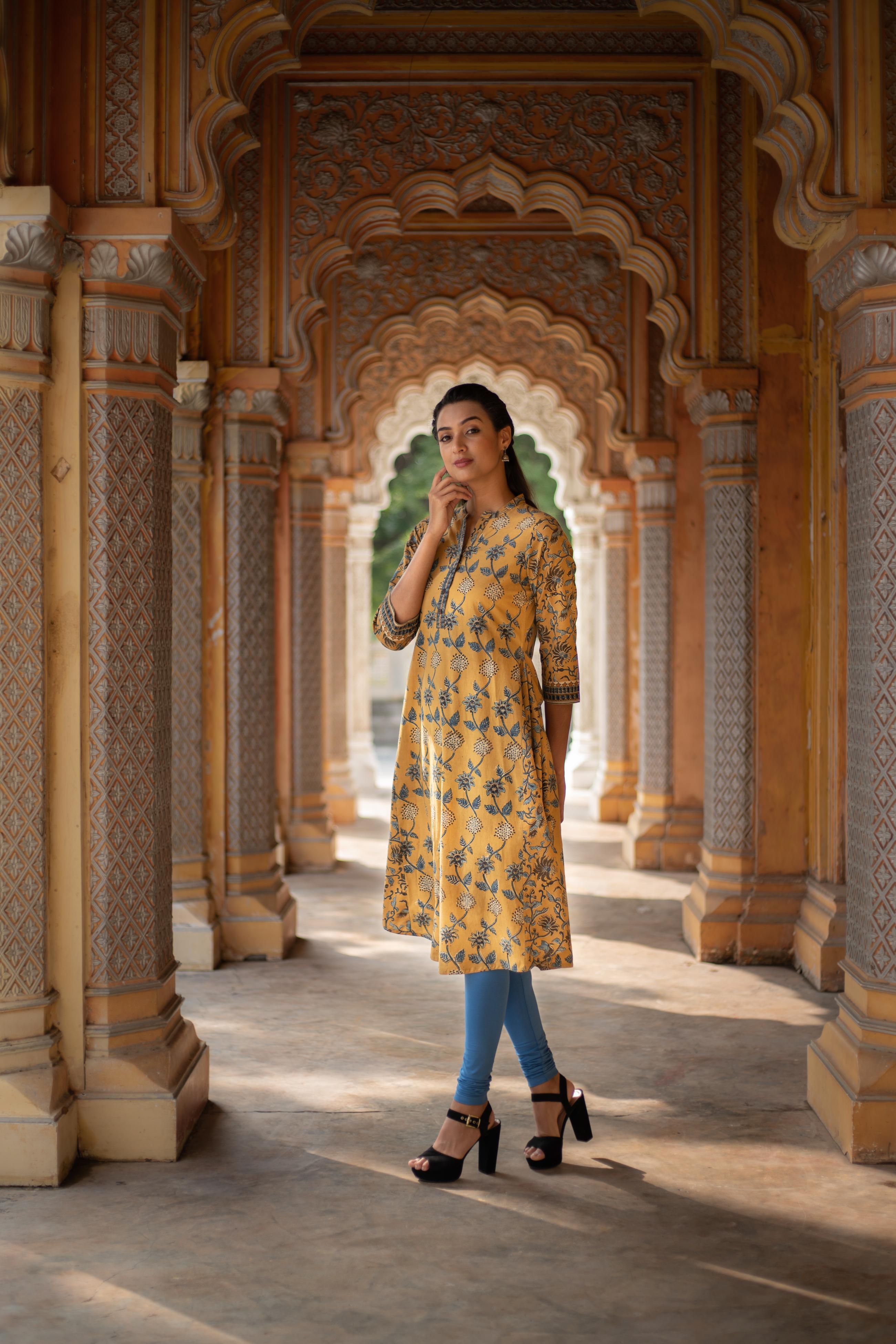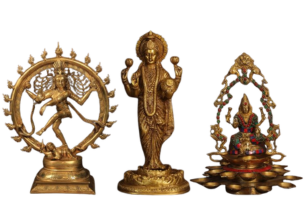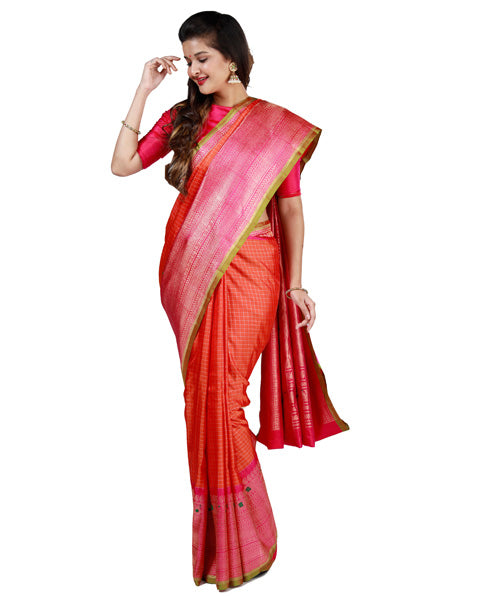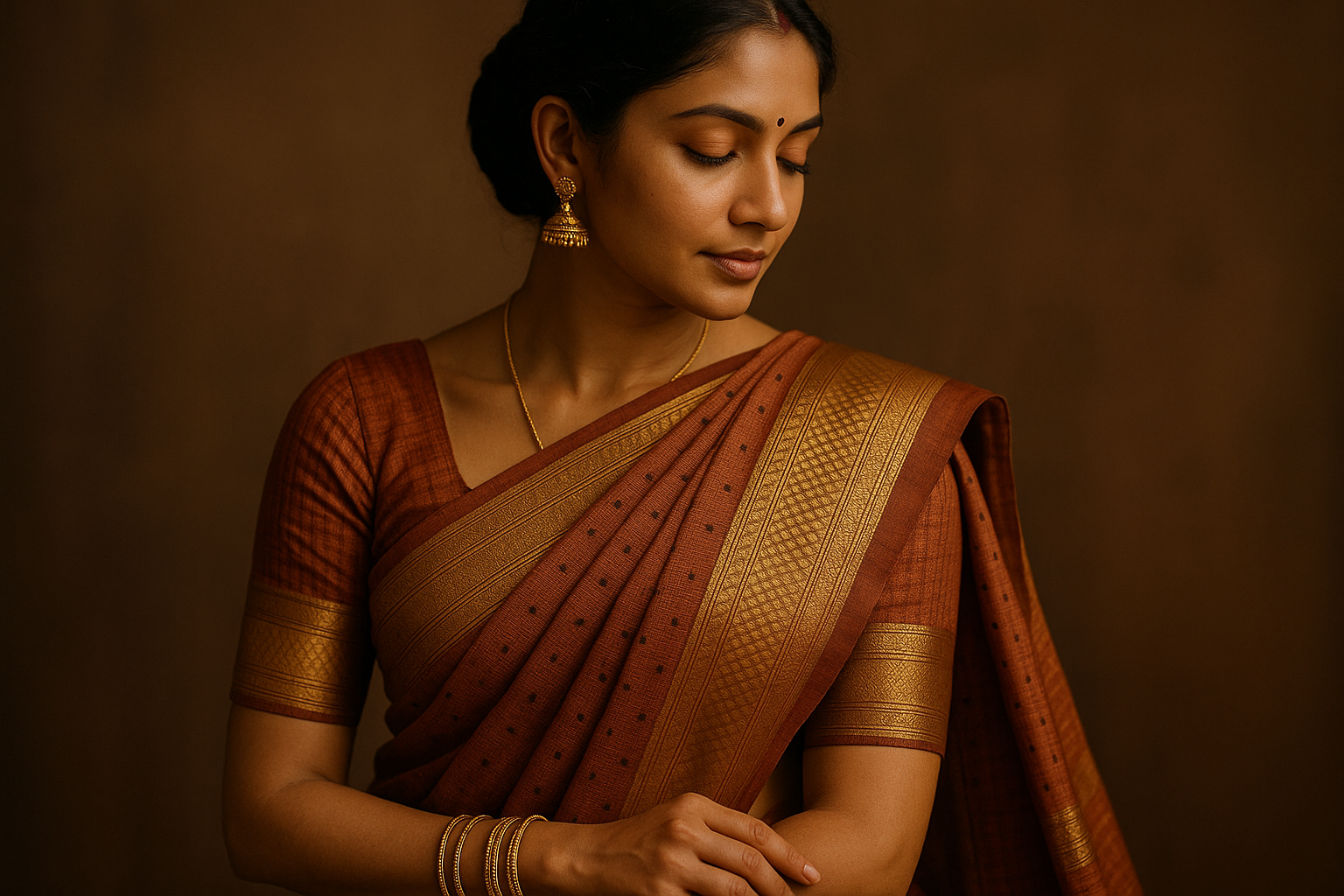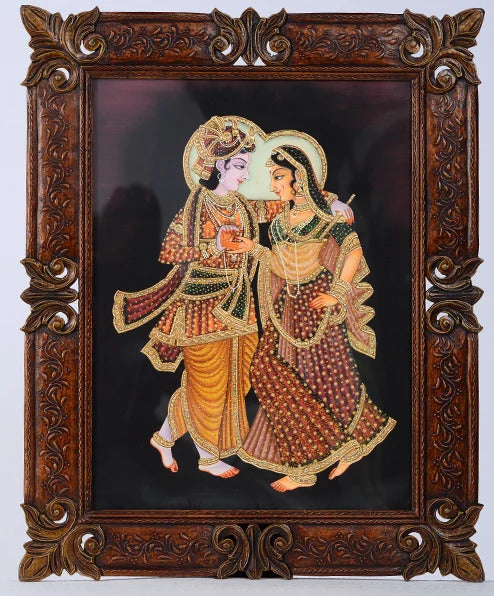Long Long ago, the vassal of the Nizam of Hyderabad, Gadwal Samsthanam or Gadwal, a small town in Telangana was ruled by the feudal landlord, Somanadri. It is said that the entire region of Gadwal was developed around a fort built by their ruler, the ancient Gadwal fort. Geographically, this region is situated in between the mighty flowing Indian rivers i.e Tungabhadra and Krishna. Gadwal is not only rich in history but is also well known for its handloom zari sarees. Just like many other handloom sarees in India such as Pochampally, Kanchipuram and many more, the Gadwal sarees are also, named after the region in which they are weaved.
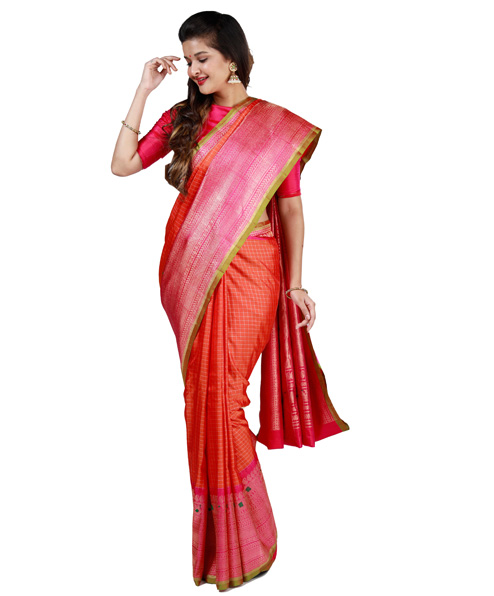
History of the Gadwal Sarees
The story of the Gadwal Sarees are as vague and mystic as it sounds. Sarees are generally known for being worn on joyous and holy occasions like during pujas. This Gadwal Chiralu( telugu word for saree) was said to have been woven by the descendants of Jiveshwar Maharaj, the one who weaved for Hindu gods and goddess. It is also written in the books of history, the late Mr. Ratan Babu Rao, a veteran in the trade of handloom sarees with his initial shop for Gadwal sarees in Hyderabad, helped gain popularity for these sarees across the globe. The 1930’s was popular for Gadwal sarees as the sales boomed.
How is it weaved?
These sarees are remarkably interwoven using the locally popular technique of “Kuppadam” and “Kumbam” for the borders of the saree. Another admirable feature found on the fabric is fascinating “ Kuttu” borders. What does Kuttu mean? It is a form of technique, wherein, the pallu and border of the saree is attached to the main saree after being woven separately.
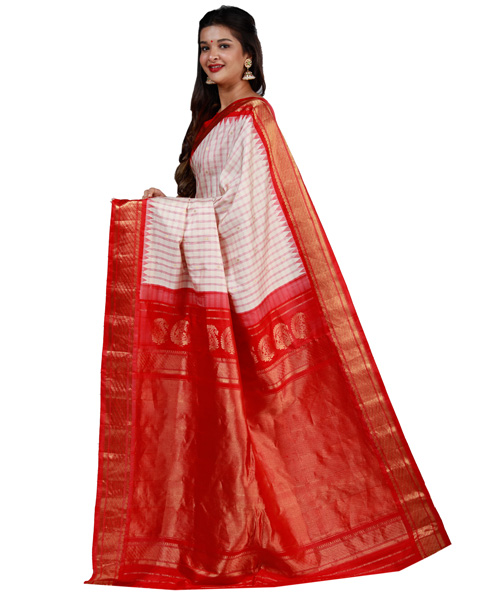
What are these sarees known for?
These handloom sarees are best known for the gorgeous gold and silver zari on the sarees. The sari, famously known as Sico sarees, is a combination of a cotton body with a silk pallu. They are also available in pure silk fabric too. The best part is that the weave is said to be as light as a feather.
Motifs and Colours:
The designs on this famous South Indian handloom saree is inspired by the culture and traditions of South India. The variety of motifs found in Gadwal sarees include architectural designs of temples, the peacock etc. This globally famous saree comes in geometric zari patterns with dark contrast colour borders and pallu too. Earlier, as these sarees were majorly inspired by temples and nature, they only appeared in earthy colours. But now, in this modern century, they come in numerous colours like green, pink, yellow and much more, appealing the global audience at all times. These sarees can be adorned as the best special occasion attire for its rich yet light in weight work.




